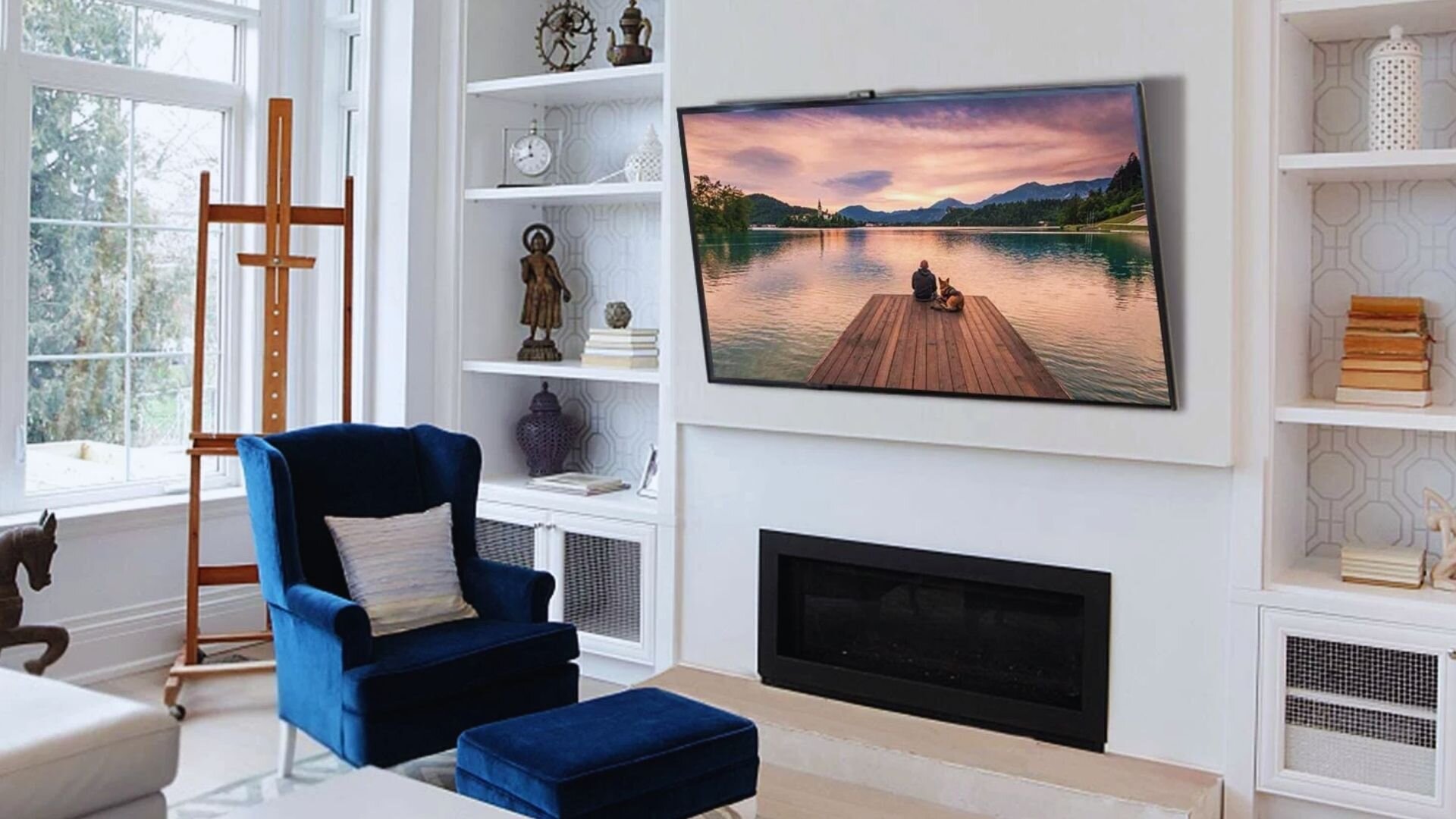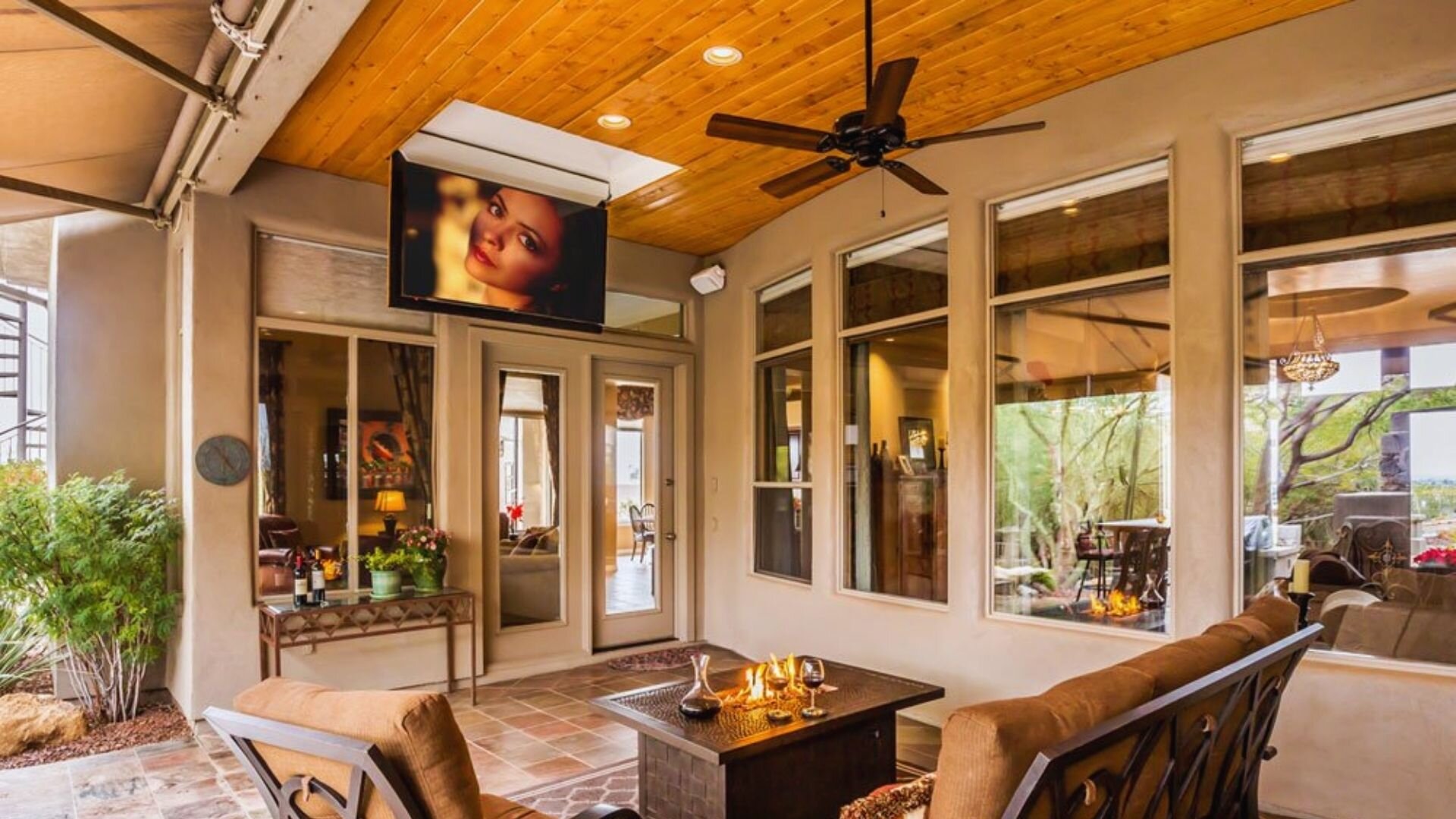Undeniably, a TV wall mount installation can elevate our entertainment experience, offering a perfect setting for movie nights with our loved ones.
Installing a wall-mounted TV provides a design aesthetic for your home. It also occupies the empty wall space and saves space for other decor. However, the key to a successful installation is selecting the appropriate TV wall bracket that perfectly matches your TV.
Feeling overwhelmed with choices for the perfect TV wall mount bracket? You’re not alone! To make things simpler, we’ve put together a straightforward guide to help you pick the best one for your needs. Let’s dive in!
Choosing The Right TV Wall Mount For Your Home
Before you choose a TV wall mount, you must check these things as they will determine the type of TV wall mount that is right for you. After all, not all TV wall mounts fit all TVs.
1. Check The TV Specifications
Start by checking your TV’s specs from the manufacturer to ensure compatibility with the wall mount you have in mind. Take a peek at the user manual for details on weight and screen size.
The wall mounts you opt for should align with the standards set forth by the Video Electronics Standards Association. That said, just because two standard TV brackets can fit a TV of the same size, it doesn’t mean they will also be compatible with the same weight. It will differ based on the brand. Hence, verifying most TV wall brackets’ maximum weight capacity and screen size compatibility is critical.
2. Check Wall Material
Next, you’ll need to choose the wall for your TV. Most standard brackets work fine with drywall or wood studs, but if you’re dealing with concrete, brick, or plaster, you’ll need special mounts.
3. Check Where The Ports Are Located
Since TV port placements vary across brands, their location will influence the type of wall mount you’ll need. If your ports are located at the back, consider a mount that slides back and forth. This makes it easier to plug and unplug devices like gaming consoles. Also, don’t forget to plan how you’ll tidy up those cables behind the TV mount.
4. Check For Height Adjustable TV Wall Mount
Looking to catch up on your shows from various rooms? Full-motion wall brackets could be exactly what you’re after. They allow you to adjust the TV angle, ensuring a clear view even if you’re sitting off-centre.
Consider height adjustability when selecting your mount. If you’re placing the TV above the typical 42-inch eye level, you’ll want a bracket that tilts downward. Luckily, many available brackets offer this feature.
Types Of TV Wall Mounts
Now that you know how to choose the right TV mount, you must also know the different types of TV wall mount brackets. These are some of the most common types of TV wall mounts available on the market:
1. Low Profile TV Brackets
![Low Profile Tv Bracket Profile Tv Bracket]()
Amongst the options, fixed TV wall mounts, often called low-profile TV brackets, are the most budget-friendly and straightforward to install. These brackets can attach a slim TV to the wall with a wire management system. They are fixed, so you won’t be able to tilt, rotate, or move the wall-mounted television if you want to try a different viewing angle.
Additionally, the inability to move the mount hampers the convenient use of ports if they are located in the back. Therefore, take a moment to consider your utilisation pattern and requirements before opting for fixed brackets.
2. Full Motion Wall Bracket
![Full Motion Wall Bracket Full Motion Wall Bracket]()
Unlike fixed TV mounts, the full-motion wall mount can tilt in all directions (up, down, left, or right). As a result, you can always change the optimal viewing angle to reduce glare and enhance your TV-watching experience. It also lets you pull the TV away from the wall to access cable ports easily.
However, full-motion mounts are the most expensive and difficult to install.
3. Tilting Mounts
![Tilting Mount Tilting Mount]()
Unlike full-motion mounts, tilting TV brackets aren’t as flexible. However, they let you adjust the TV screen for better viewing angles. Plus, because they’re set a bit further from the wall, it’s easy to reach ports and cables. To top it off, tilting mounts are pretty straightforward to install.
4. Ceiling TV Brackets
![Ceiling Tv Bracket Ceiling Tv Bracket]()
When your wall cannot bear the TV’s weight, ceiling mounts can be the most effective solution. Instead of mounting your TV on the wall, this type of TV bracket hangs from the ceiling to save space and ensure optimal viewing angles. It can rotate 360 degrees to watch TV from different angles.
How To Install TV Wall Mount
Are you good with tools? If so, installing a low-profile TV bracket or tilting wall mount might be right up your alley. If you’re keen to give it a go, just follow these instructions.
- Check if you have all the tools required, like drill, bolts, screwdriver, and extra hardware.
- Most wall mounts come with a template for positioning and drilling the four mounting holes—use that.
- Lag-bolt the bracket to the vertical studs.
- Use a level, stud finder, drill bits and drill to drill the pilot holes properly.
- Use a socket set to install the bolts into the studs or the anchor.
- Call a friend for help and mount the TV into place.
- Once it is mounted, you can slowly release your hands and check to ensure levelled positioning.
Finding the Perfect Fit: A Guide To Selecting Your TV Mount
We advise you to carefully follow these instructions when you want to mount your TV on the wall or ceiling.
However, wall mounts like full-motion TVs or ceiling brackets can be tricky to install DIY. So, i t’s probably a better idea to hire a professional to do the job.
At Bright Force Electrical, we’re here to assist. Whether it’s installing a TV or another electrical appliance, our skilled technicians handle tasks efficiently and with ease. Reach out to our Sydney electricians today and let us show you what we can do!












